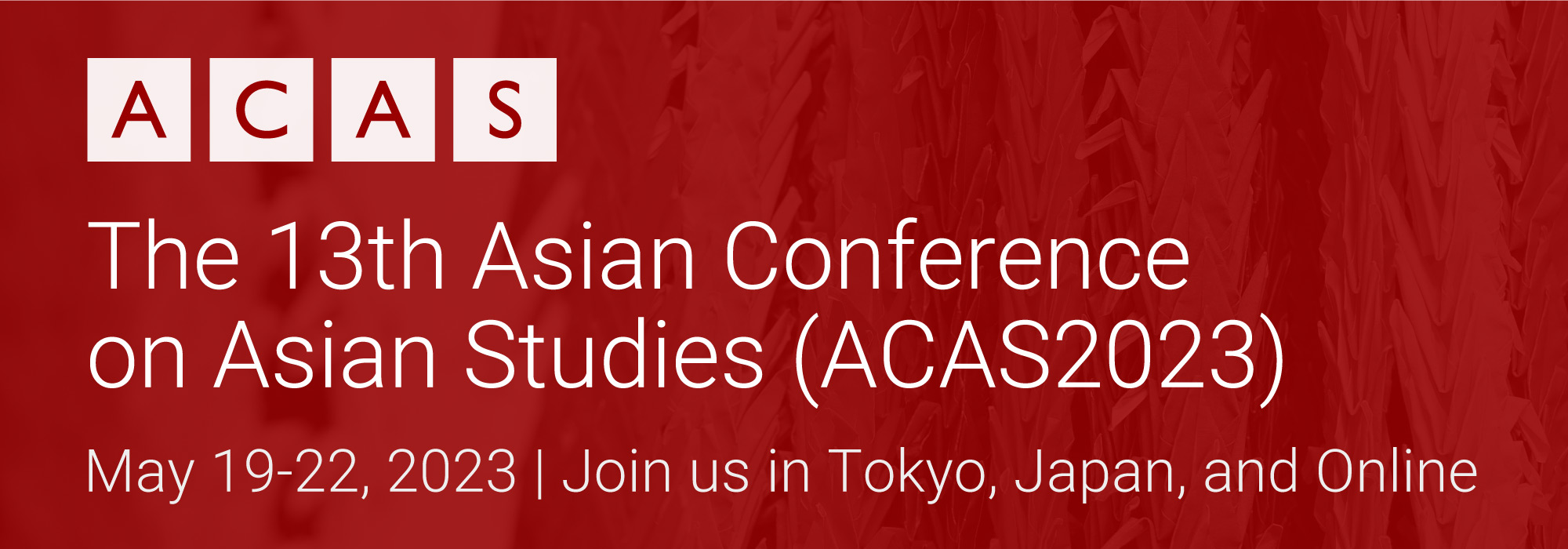This page provides details of featured presentations, the conference schedule and other programming. For more information about presenters, please visit the Speakers page.
Conference Outline
Location: Tokyo Garden Terrace Kioicho Conference Center
09:30-10:30: Conference Registration
10:30-10:35: Announcements
10:35-10:45: IAFOR Chairman's Welcome Address & Recognition of IAFOR Scholarships
10:45-11:30: Keynote Presentation
11:30-11:35: Short Break
11:35-12:20: Panel Presentation
12:20-12:30: Conference Photograph
12:30-13:30: Lunch Break
13:30-14:20: Keynote Presentation
14:20-14:45: Coffee Break
14:45-15:45: Featured Panel Presentation
15:45-16:00: Conference Photograph
16:00-17:00: Conference Welcome Reception
Location: Toshi Center Hotel
09:30-10:30: Conference Registration
10:30-10:35: Announcements
10:35-10:45: Welcome Address
10:45-11:30: Keynote Presentation
11:30-11:35: Short Break
11:35-12:20: Panel Presentation
12:20-13:30: Lunch Break
13:30-14:20: Keynote Presentation
14:20-14:45: Coffee Break
14:45-15:45: Featured Panel Presentation
15:45-17:00: Conference Poster Session
19:00-21:00: Conference Dinner
Location: Toshi Center Hotel
09:30-11:10: Onsite Parallel Session 1
11:10-11:25: Coffee Break
11:25-13:05: Onsite Parallel Session 2
13:05-14:05: Lunch Break
14:05-15:20: Onsite Parallel Session 3
15:20-15:35: Coffee Break
15:35-16:50: Onsite Parallel Session 4
Location: Toshi Center Hotel
10:00-11:40: On-site Parallel Presentation Session 1
11:40:13:00: Lunch Break
13:00-14:40: On-site Parallel Session 2
14:40-14:55: Coffee Break
14:55-16:35: On-site Parallel Session 3
16:35-16:50: On-site Closing Session
Location: Online
09:30-11:10: Online Parallel Presentation Session 1
11:10-11:25: Short Break
11:25-12:40: Online Parallel Presentation Session 2
12:40-13:40: Extended Break
13:40-15:20: Online Parallel Presentation Session 3
15:20-15:35: Short Break
15:35-17:15: Online Parallel Presentation Session 4
17:15-17:30: Online Conference Closing Session
The above schedule may be subject to change.
Previous Programming
View details of programming for past ACAS conferences via the links below.
